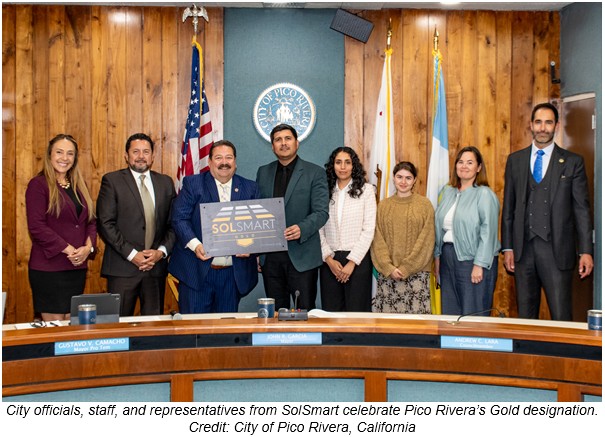Summing up New York’s plans for small-scale solar, big battery storage and transmission upgrades

The state of New York unveiled a slew of renewable energy-focused plans the last few weeks, featuring a roadmap to 10 GW of distributed generation, transmission investments and RFPs for batteries to replace peaker plants.
10 GW of solar on the way
The State Public Service Commission approved a new framework for the State to achieve at least 10 GW of distributed solar by 2030. The adopted framework includes an investment of $1.5 billion in ratepayer-funded incentives to extend the successful NY-Sun program. The public investment will spur approximately $4.4 billion in private investment to bring awarded projects to fruition, for a total of $5.9 billion in expected investment over the mid- to late-2020s.
The plan also includes the state’s first prevailing wage requirement for projects over 1 MW and outlines how 40 percent of the program’s benefits shall be delivered to disadvantaged communities and low-income residents.
The now-approved roadmap provides:
- Enough new clean, renewable energy to annually power 700,000 additional homes;
- 70% of capacity expected to be constructed as community solar; 30% expected to be rooftop and commercial and industrial;
- 1600 MW of new incentives to be directed toward low and moderate income and disadvantaged communities, dedicating $600 million in total investments;
- Requiring all projects 1 MW and over to hire labor at prevailing wage; and
- At least 450 MW, enough to power nearly 79,000 homes, to be built in the Con Edison electric service area, increasing the installed solar capacity in this area to over 1 GW.
- At least 560 MW, enough to power 98,000 homes, to be advanced through the Long Island Power Authority.
Expanding the state’s solar goal is expected to have an average bill impact for New York customers of less than one percent, or approximately $0.71 per month for the average residence.
NYPA seeks big batteries
The New York Power Authority (NYPA) issued a Request for Proposals for potential use of its small clean power plant sites and related electric infrastructure for the development of bulk-scale battery storage projects. Bids are due May 24, 2022, with potential awards announced July 1, 2022.
Background: In 2001, NYPA installed small clean natural gas fired plants at six locations in New York City and one on Long Island. They operate infrequently—roughly 10 percent of the time, in recent years, when directed to do so to meet energy demands—providing local reliability and resiliency.
A study was commissioned by NYPA, in consultation with the PEAK Coalition, to analyze potential clean energy options to decarbonize NYPA’s peaker plants. Study researchers examined energy forecasts of changes in the New York electric supply mix as well as changes in demand over the next two decades, showing that as early as 2030, with the advent of more renewable energy coming into New York City, and a resulting decrease in the expected frequency and duration of run times, four-hour energy storage could provide enough energy to fully replace the operations of each individual small clean power plant unit.
The following is a summary of the study’s key findings:
- Given site characteristics and battery density assumptions, each SCPP site presents opportunities for adaptation strategies, including full, or close to full, replacement with battery storage by 2030;
- As electrification loads increase and New York shifts to a 100% decarbonized system by 2040, a system-wide reliability need is expected, that requires energy resources with capabilities for longer dispatch durations that batteries alone may not satisfy;
- Based on historical output levels, the frequency and duration of NYPA’s small clean power plants’ run-times would make full replacement with battery storage impossible; however, by 2030, the frequency and duration of the plants’ run-times are projected to decline, allowing for the possibility of full replacement with 4-hour battery storage at each individual site.
Large-scale renewable and transmission projects.
The State’s Public Service Commission approved contracts with Clean Path New York LLC for its Clean Path NY project and H.Q. Energy Services Inc. for its Champlain Hudson Power Express project to deliver solar, wind and hydroelectric power from upstate New York and Canada to New York City.
As the largest transmission projects contracted for New York State in the last 50 years, these projects will reduce the city’s reliance on fossil fuel-fired generation by more than 50 percent in 2030.
“Today’s decision is a major step forward in achieving New York State’s goal of 70 percentage of our energy from renewable resources, while paving the way for thousands of high-quality jobs, spurring billions in economic activity, reducing our dependence on fossil fuels, and ushering in a cleaner, greener New York for all,” stated Governor Kathy Hochul.
These renewable energy and transmission projects are expected to deliver up to $5.8 billion in overall societal benefits statewide, and $8.2 billion in economic development across the state, including investments in disadvantaged communities.
The City of New York’ will purchase a portion of the renewable attributes generated by the two projects, thus helping to make the scale of these projects possible while creating the opportunity to reduce the cost impact of these projects by up to $1.7 billion to all other ratepayers.




Comments are closed here.